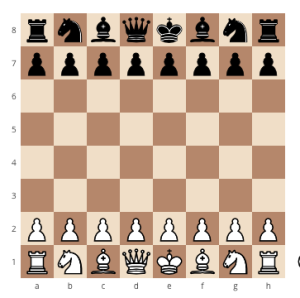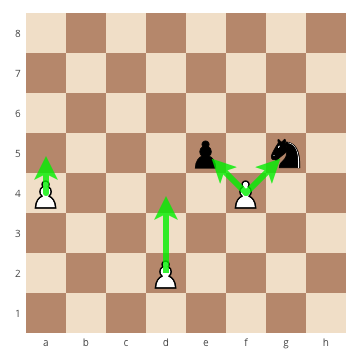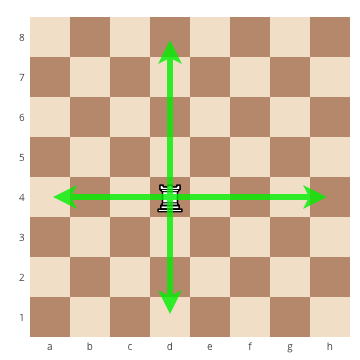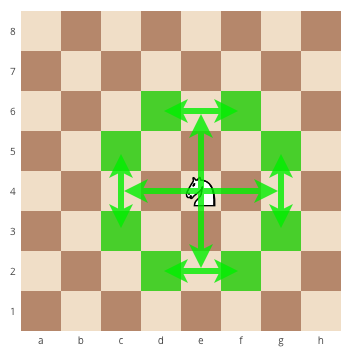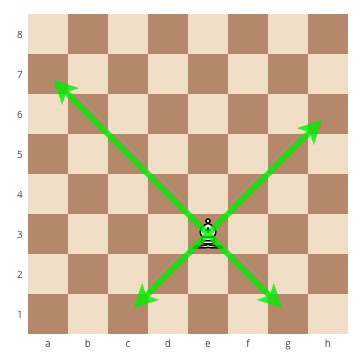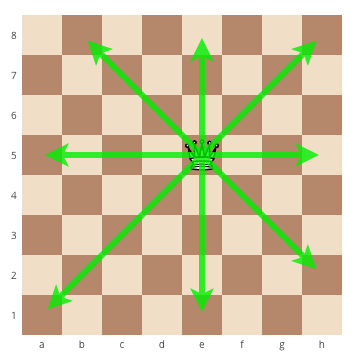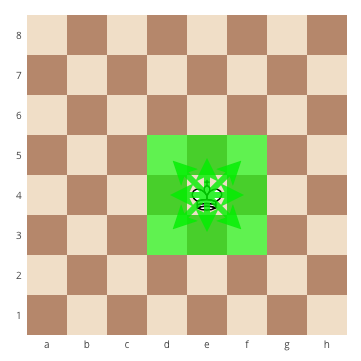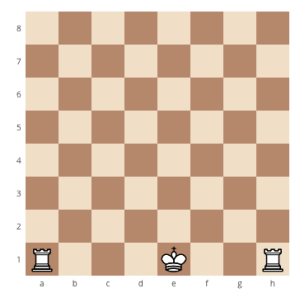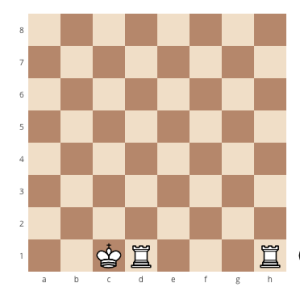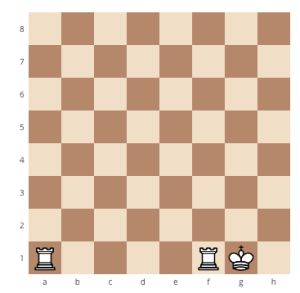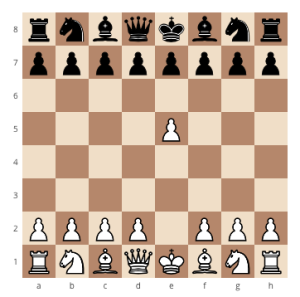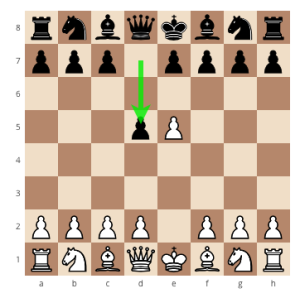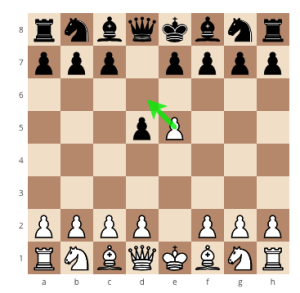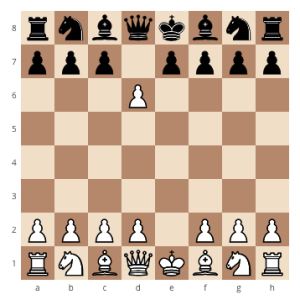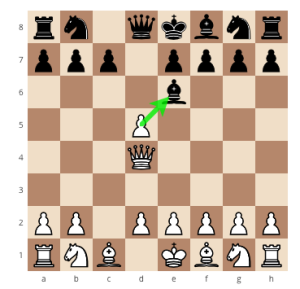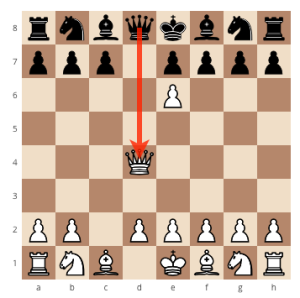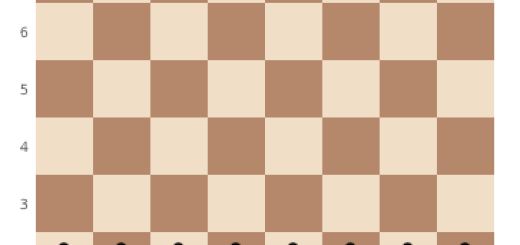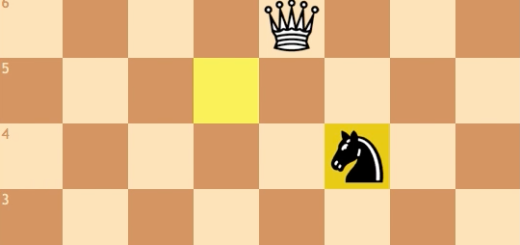Learn How to Play Chess 101: Beginner’s Guide to Chess Rules & Chess Strategy
Learn How to Play Chess 101
The Beginner’s Guide to Chess Rules & Chess Strategy
Are you interested in learning how to play chess, the rules of chess, or both?
Keep reading, you’re in the right place.
When it comes to learning how to play chess, there a number of chess rules to follow, strategies, and much more.
The game of chess is a matter of skill, critical thinking, and understanding the game. Becoming a truly great chess player, or even a chess master, takes much time and practice. Fortunately, learning chess and learning the basic rules of chess can be fairly simple.
I remember when I first started learning chess, and it all seemed very confusing. There was so much to learn, it almost seemed like an impossible feat at first. Many people tend to want to group checkers and chess into the same category, since they are both boardgames that involve moving and capturing pieces, but chess has far more going on.
As I first began to learn, I wanted to get very good, very fast, but with most skills, this was not the best way to approach, nor likely to happen. Learning the rules of chess and especially developing to a point where you can fully understand the game takes time. What both myself and others have found to be one of the most effective ways to learn chess, is to break it down into steps.
As we’ll cover throughout this article, first learn how to move the pieces on a basic level, then learn how each chess piece captures, then learn the more advanced moves, and then begin slowly developing both your offensive and defensive chess strategies.
Today, we’ll break down how to play chess and the rules of chess today, including the basic rules of chess, how to set up a chessboard, how to move the chess pieces correctly, how to capture an opponents chess pieces, and much more. With this beginner’s guide on how to play the game of chess, your game will instantly improve and you will have the basic understanding of chess.
Learn How to Play Chess:
The Basic Rules of Chess
When it comes to playing chess, there are a few basic rules that all players follow. This includes how to set up the chessboard, taking turns, how to capture opponent’s pieces, etc. Let’s go over them now.
1. Setting Up the Chessboard:
When it comes to beginner’s of chess, setting up the chessboard can sometimes seem confusing. The key to learning how to set up the chessboard is learning how to set up the chess pieces from the outside in, starting with the rooks.
The actual chessboard set up is shown below.
(A more in-depth guide on setting up the chessboard is available here.)
The white squares of the chessboard should always be at the closest right hand corner for both players.
First start with the rooks on the outside. then comes the knights, then the bishops. A great tip is to think of the bishops as protecting the king and queen, so they must go next to the King and queen. Once that is set up, all that is left is the queen and the King.
Remember, “Queen on color”. The queen should be on the color of her own square. With this simple method, you can set up the chessboard properly.
When learning chess and how to set up the chessboard, a few tips include:
- Rooks (Castle’s) on the outside
- All pawns in front
- Queen on color
- Horses guard the castle
- Bishops guard the queen and king
When you break it down this way, it becomes much simpler. The hardest part about setting up the chessboard usually involves remembering where to place the knights, bishops, queen, and king. When you start picturing the knights circling the castle, and the bishops as guards for the king and queen, it becomes much more simple.
2. Turns:
White always moves first. Players then alternate turns.
Players move one piece at a time, except when castling, which is alternating the King and Rook position, and involves moving both chess pieces. (Explained later). No player ever moves twice in a row.
Many beginner players ask if it’s better to be white and go first, or dark and go second. Frankly, it doesn’t make too much of a difference. Chess is by no means a race, and when playing against someone with more experience, the real game begins once each player has set up their pieces.
*The first moves can be made with either the pawns or the knights. These are the only 2 chess pieces that have legal moves on the first turn.*
3. Capturing Opponents Pieces:
Understanding how to capture your opponent’s pieces is critical. After all, placing the King in checkmate is much easier when you’ve taken a few of your opponent’s pieces off of the chessboard.
Players can capture pieces when they encounter an opponent in their movement path. Only pawns capture pieces differently than they move (Read more about capturing with pawns here). Players cannot capture or move through their own chess pieces.
A great tip when learning the game of chess in regards to capturing pieces, is never get TOO caught up with capturing your opponent’s chess pieces, to the point that it takes away from the main goal: Capturing the King.
There was a game I was playing online when I first was learning chess, and like most rookies, I just wanted to capture every chess piece, and then checkmate the King. I was quite successful in doing this, capturing my opponents Rooks and bishops, and outnumbered my opponent significantly in terms of who had more higher valued chess pieces. I was thinking to myself how easy this was and how I had this game won.
The very next move, my opponent placed me in checkmate.
How?
My opponent was focused on capturing my King, not just my pieces, and as a result, was able to capture my King despite the great advantage I had from all of the pieces I had captured.
The lesson to learn here is while it’s always a great advantage to capture your opponent’s other chess pieces, the main goal of the game is to checkmate the King, not just capture every piece.
4. Length of the Chess Game:
In chess tournaments, or when playing chess online, the games are usually timed. If your playing for fun, the game is usually played until there is a checkmate, stalemate, or both players agree to stop playing.
Online, sometimes people play speed games where the game is only 1 or 2 minutes. This rarely results in checkmate, and is more played for finesse, seeing who can move the fastest without accidentally losing.
When playing online, it’s best to play at least for 10 minutes. This does involve some quicker thinking which can result in mistakes, but is enough time to allow the game to develop. If you have more time, 20 or 30 minutes will fully allow each player the time to look over the chessboard and make fully educated decisions.
Learn How to Play Chess:
How to Move the Chess Pieces
Once you understand how to correctly set up the chessboard, the next step to is learning how to correctly move the chess pieces. A basic guide on how to move the chess pieces correctly is available here. An in-depth guide on each chess piece is also listed below by clicking on the name of the chess piece.
Here is a basic slide on how to move each chess piece:
For a more in-depth guide on each chess piece:
Pawns
The pawns each move forward one space with the exception of how they capture. Pawns are the only piece on the chessboard that capture in a different motion than they are moved, capturing one space forward and to the side.
When it comes to learning chess, many rookies make the mistake of not valuing their pawns. Pawns can sometimes be your most valuable pieces. They can be promoted if they reach the other side of the chessboard, and can also be great for trapping a piece into capture. They can sometimes cost you your own high value chess pieces, so be sure to both value your pawns by keeping them protected, and keeping an eye on your opponent’s pawns.
I recall when first learning I figured they were “just pawns” and it wouldn’t really matter if they were or captured or not. I lost a lot of chess matches due to this, and now, I place as much value on my pawns as any other piece, and have learned to even win games with pawns, placing the King in checkmate with a pawn in the right position.
Rook
The rook’s (also known as the castle) are the third most valuable chess piece after the King and queen. Rooks are especially important for the end of a chess match and checkmating the King, as they can block off entire sections of the chessboard.
This is more advanced, but one of the most common ways to capture a rook (and have your own captured) is when a bishop captures the rook on the angle. This usually happens when a pawn is protecting the rook on the diagonal, and a bishop is in the line of capture.
A player will move this pawn forward, unaware of the bishop, and on the next move, the rook is captured, usually without the bishop being captured in return, a devastating move that can many times cost the game.
Knight
The knights are especially dangerous because they move in an L shape across the chessboard. This makes them great pieces for capturing your opponent’s queen or rook, simply by placing the King in check, and also having the queen or rook in the knight’s line of capture. It takes time to fully develop the skills that come with the knight, and anticipating your opponent’s position with the knight.
I spent several games focused on just mastering the knight, and becoming more aware of how it can be moved against me. Many rookie players will make the mistake of not taking the time to see where the knight can be moved, and will often lose a queen or a rook to the knight because of this.
Always make sure to take a few moments to look over where the knights may move on chessboard, including your own. It usually only takes 1 mistake in the game of chess to make the difference between a win and a loss, and the knight can often times be the piece that makes this difference.
Bishop
Bishop’s move across the entire chessboard in a diagonal. They are great for capturing chess pieces across the board when your opponent loses track of your bishop’s position. They are especially great for capturing a cornered rook when the pawn protecting the rook is moved out onto the chessboard.
Another great thing about bishop’s is they are great for extra protection of a chess piece. Many times, when a player places the King in check with the queen, the bishop can be moved to protect the King. As the queen is a much higher value chess piece, they will not capture the bishop, and instead will retreat.
Queen
The queen is by far the greatest chess piece on the board. The queen can move in all directions as many spaces as she pleases. Always protect your queen and look for opportunities to capture your opponent’s. Once you capture your opponent’s queen, it’s fairly simple to achieve checkmate.
When first learning, it can be fun to play games using almost only the queen. This is a great way to fully develop how to use the queen in chess, and fully understand how to use her. When first learning, I was able to once capture nearly all of my opponent’s chess pieces with just the queen and a little help from the knight. I’ve also had opponent’s who have returned the favor.
Every chess piece is important, but always remember the queen is the most powerful chess piece on the board.
King
The first thing to understand is the king is the piece the entire game revolves around. The king only can move 1 space in all directions, so he is not easy to move around, but the point of the game is to have the other pieces do the work, and the King sits back and is protected.
Always be sure that the King is protected, and try to keep the King in a position where he is both protected, and can also escape if necessary. Having the King placed in a position where he is protected but cornered may not work out well. It’s also best to avoid the King being out in the open of the chessboard, as this will make him very vulnerable.
The only time to begin moving the King all over the chessboard is if it’s nearing the end of the game, and only a few pieces are left, such as only a few pawns, and it’s a matter of protecting them to reach the other end of the chessboard.
Special Moves in Chess:
It’s important to know the 2 special moves in chess. There are 2 exceptions to the basic rules of how the chess pieces can move and capture.
These 2 special moves are “castling” with the king and the rook, and a move known as “En passant”, involving the pawns.
1. Castling:
Castling is the only move that allows 2 chess pieces to be moved at once.
These 2 pieces are the King and the Rook.
The castling move is when the King is moved 2 spaces toward the rook that it will castle with, and the rook moves to the other side of the King. (Image below)
It’s always best to castle as soon as possible. This will keep your King better protected and always will have one of your rooks more protected. First focus more on the basics prior to castling, but make sure to understand how once you understand the basics and fundamentals.
The King can castle to either side of the rook as long as:
- The king has not moved
- The king is not in check
- The king does not move through or into check
- There are no pieces between the king and the castling rook
- The castling rook has not been moved.
(Find out more about Castling, such as the strategy and reasoning behind it here.)
2. En Passant
En passant is a special movement for a pawn capturing a pawn. It can only be done if an opponents pawn is moved two spaces forward into a space next to your own pawn. (See below).
En passant allows you to capture the opposing pawn moving forward diagonal, as if the opponents pawn only moved one space forward.
(Read More on the En Passant Move in Detail Here)
How to Win the Game of Chess
Check:
A king is in “Check” when an opponent moves it’s chess piece in a position to capture their opponent’s King. An example would be by placing your queen in the line of capture of your opponent’s King.
This placed the King in “check”, since he is now in the line of capture. Your opponent must now make a move to place the King out of check, either by moving the King, capturing the queen, or placing another piece in front of the King, blocking him from capture.
Sometimes players will place your King in check solely to force you to move certain chess pieces, or move your King prior to castling, which will not allow a castle later in the game.
If the king cannot be moved out of check, then that is considered “Checkmate”.
Checkmate:
Checkmate is the goal of the game of chess and the only way to win the game. Checkmate is when a king is placed under attack, and has no spaces to move where he will not be captured, hence, the king will be defeated.
*Once you master the basic’s, be sure to learn about the 2 move checkmate (Fool’s Mate), 3 move checkmate, and 4 move checkmate (Scholar’s Mate)*
Draws (Also known as “stalemate”)
Occasionally chess games do not end with a winner, but with a draw, also known as a stalemate.
There are 5 ways a chess game may end in stalemate, (rather than checkmate):
- It is one player’s turn to move, but his king is NOT in check and yet he does not have another legal move
- There are not enough pieces on the board to force a checkmate (example: a king and a bishop vs. a king)
- A player declares a draw if the same exact position is repeated three times (though not necessarily three times in a row)
- Fifty consecutive moves have been played where neither player has moved a pawn or captured a piece. (The only way this can really happen is if both players are only moving their knights for 50 moves in a row)
- The players simply agree to a draw and stop playing
Learn How to Play Chess:
Beginners Chess Strategies
While there are many strategies in the game of chess, for those just learning how to play, there are 5 basic chess strategies nearly every player follows. Learning and mastering these will automatically take your chess game up to the next level.
1. Protect Your King
As mentioned earlier, when first learning how to play chess, many beginner’s make the mistake of focusing so much on capturing their opponent’s King, they forget to look after their own.
Without the king, there is no game. Always be sure to keep your King in a safe position. No matter how close you may be to checkmate, it won’t matter if your King is placed in checkmate first.
A common mistake many rookies make when first learning chess is allowing their King to be out in the open or not have any type of chess pieces in a position to protect the King. This is why it’s always good to castle as soon as possible.
I recall one chess match I played once I gained more experience. They had the advantage on me, as they had captured many of my chess pieces, but there was on mistake they had made: The king was not castled and not protected.
Despite the great advantage they had on me, I was experienced enough at this point to be able to capitalize on this mistake. They were beginning to close in on my King, only perhaps 1 or 2 moves away from checkmate, but I was able to place their King in check first, and once I had done this, I was like a pitfall latching onto a toy, I just wouldn’t let go.
For the next 15 moves or so, their King would move out of check, and I would keep placing the King back in check, slowly working toward being in a position to have a few other chess pieces involved. Sure enough, I had ended up winning the chess match, despite being at a great disadvantage of chess pieces, and only a few moves away from losing.
It places your King in a more secure section of the chessboard, rather than the center. It also places the King in a position with a few pawns you can maneuver to move the King to safety if necessary,
2. Play With Focus
When first learning the game of chess and chess strategy, it can be tempting to just focus on capturing as many of your opponent’s pieces as you can, it is not always necessary.
Along with the story mentioned above, another rookie mistake I made when first learning the strategy and rules of chess was thinking I could not win the game without capturing the majority of my opponent’s chess pieces. The funny thing was, as I played under this belief, my opponent’s would manage to checkmate me within only a few moves due to my inexperience.
This is evident from the 15 move checkmate achieved against a live opponent. Every move should be focused on either protecting your own King or getting closer to capturing your opponent’s King. This can be done by focusing on capturing your opponent’s unprotected pieces, and once your opponent is weakened, begin moving in toward checkmate.
3. Control the Center
In the game of chess, it’s said the person who controls the center of the board is controlling the game.
You should try and control the center of the board with your pieces and pawns. If you control the center, you will have more room to move your pieces and will make it harder for your opponent to find good squares for their pieces.
A great way to do this is to move the knights out early in the game. Make sure they are protected and not in a position to be captured by pawns, but by placing the knights further out, they have a wider range of capture, and also will prevent your opponent from moving too many pieces of their own into the center.
4. Value Each Chess Piece
Don’t lose your valuable chess pieces with careless moves, and don’t undervalue any of your pieces, such as your pawns. Each piece can play a crucial role in checkmating the King so be sure to play each of your chess pieces with care. Below is an easy system that most players use to keep track of the relative value of each chess piece:
A pawn is worth 1
A knight is worth 3
A bishop is worth 3
A rook is worth 5
A queen is worth 9
The king is infinitely valuable
While these points don’t actually mean anything at the end of the game (the point of the game is checkmate, not who has the highest score) you can use it as a system for making decisions while playing, helping you know when to capture, exchange, or make other moves.
5. Take Your Time
When you’re first learning how to play chess, mistakes will happen, but it’s important to take your time. Be sure to check your moves before you play, especially when playing more experienced players. Sometimes one move may seem tempting, but it may open up a wide range of captures for your opponent.
In the example below, it may be tempting to capture the bishop with the pawn, but that would allow your opponent to capture your queen on the next move. Based on the value system, losing a queen for a bishop is not to your advantage.
One of the most common mistakes in the game of chess rookies make is losing patience and focus, and not anticipating how one move will effect the next few following moves. What makes a chess player great is the ability to anticipate how one move will effect future moves.
Learn How to Play Chess:
Basic Chess Tournament Rules
How you play chess in a tournament may be different than playing at home. While playing online or at home, you can set up the rules how you like. While playing in a chess tournament, many follow a set of common rules.
These rules include:
1. Touch-move
If a player touches one of their own pieces they must move that piece as long as it is a legal move. If a player touches an opponent’s piece, they must capture that piece. A player who wishes to touch a piece only to adjust it on the board must first announce the intention, usually by saying “adjust”.
2. Clock and Timer Rules
Most tournaments use timers to regulate the time spent on each game, not on each move. Each player gets the same amount of time to use for their entire game and can decide how to spend that time.
Once a player makes a move they then touch a button or hit a lever to start the opponent’s clock. If a player runs out of time and the opponent calls the time, then the player who ran out of time loses the game (unless the opponent does not have enough pieces to checkmate, in which case it is a draw).
For the official guide on chess tournament rules, see The United states Chess Federation rules here.
Learn How to Play Chess:
Improving Your Chess Game
Knowing the rules and basic strategies of chess is only the beginning. There is so much more to learn that you could never learn everything even in a lifetime. Even the chess masters continue to learn!
For those new and just learning chess the best 3 ways to improve your game are:
1. Play
The best way to learn chess is to play. Nothing teaches better than experience. Play as much as possible. With online chess available against a live opponent, as well as against a computer, it’s very easy to practice.
Don’t worry about making mistakes, every mistake is a chance to learn and get better. Learn from all your games, both the games you win and lose. The best method to take is to first just play to get a feel for the game, and then focus on building skills gradually. This takes us to our next point:
2. Learn Gradually
No one becomes great at something over night. The best way to learn of course is through experience, and learning from experience. Be sure to study the game and learn different strategies, but focus on learning one step at a time. If you’re just starting out, just focus on learning the basics, such as effectively moving the pieces.
Once you master the basics, then focus on more specialized moves and strategies. Practice playing by mostly only using certain pieces, such as your knights and bishops, or just your knights. You may not win, but you’ll get a much better grasp for how to use these pieces.
Also be sure to learn from your losses. Take note of what mistakes you made, how you can prevent it from happening in the future, and how you can also apply the moves that causes you to lose on your opponent next time.
My learning curve was cut significantly just from studying the moves my opponent’s used on me to win games. If they had used a certain move on me or found a weakness in my game, I would look over it, and not only prevent an opponent from doing the same thing in the future, but also was able to notice when a opponent I was playing made the same mistake, and how to capitalize on it.
Check out the shop for our player approved products to get good at chess fast.
3. Have Fun
Remember, it’s only a game. Like anything else, enjoy the process of improving your game. Don’t get discouraged if you don’t win all of your games right away. Even the greatest have lost many games Remember every mistake is a chance to learn and get better, and with time, you’ll notice your game improving each time you play!
Wrapping Up: How to Play Chess 101
Beginner’s Guide to Chess Rules & Chess Strategy
We’ve now covered all the basics on how to play the game of chess. Remember it takes time to develop this skill and each game you play you’ll increase your skills and experience.
If you’ve never played before, just focus on the rules and getting use to moving the chess pieces. If you’re a beginner but interested in advancing your skills, study some strategy, practice some of your own, and keep leaning as you.
Take your time when learning, be open to making plenty of mistakes, learn from your mistakes, and most importantly, have fun.

